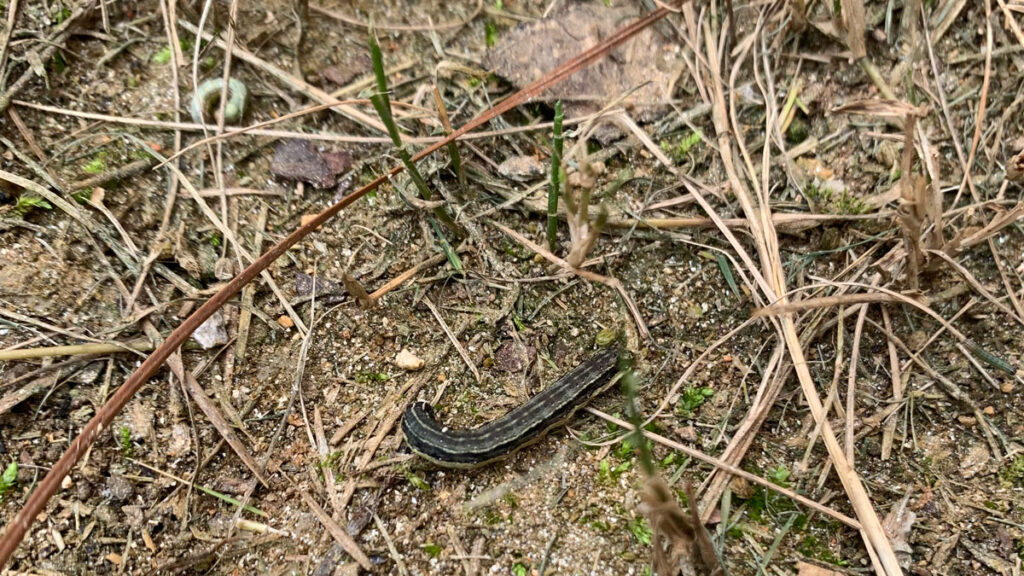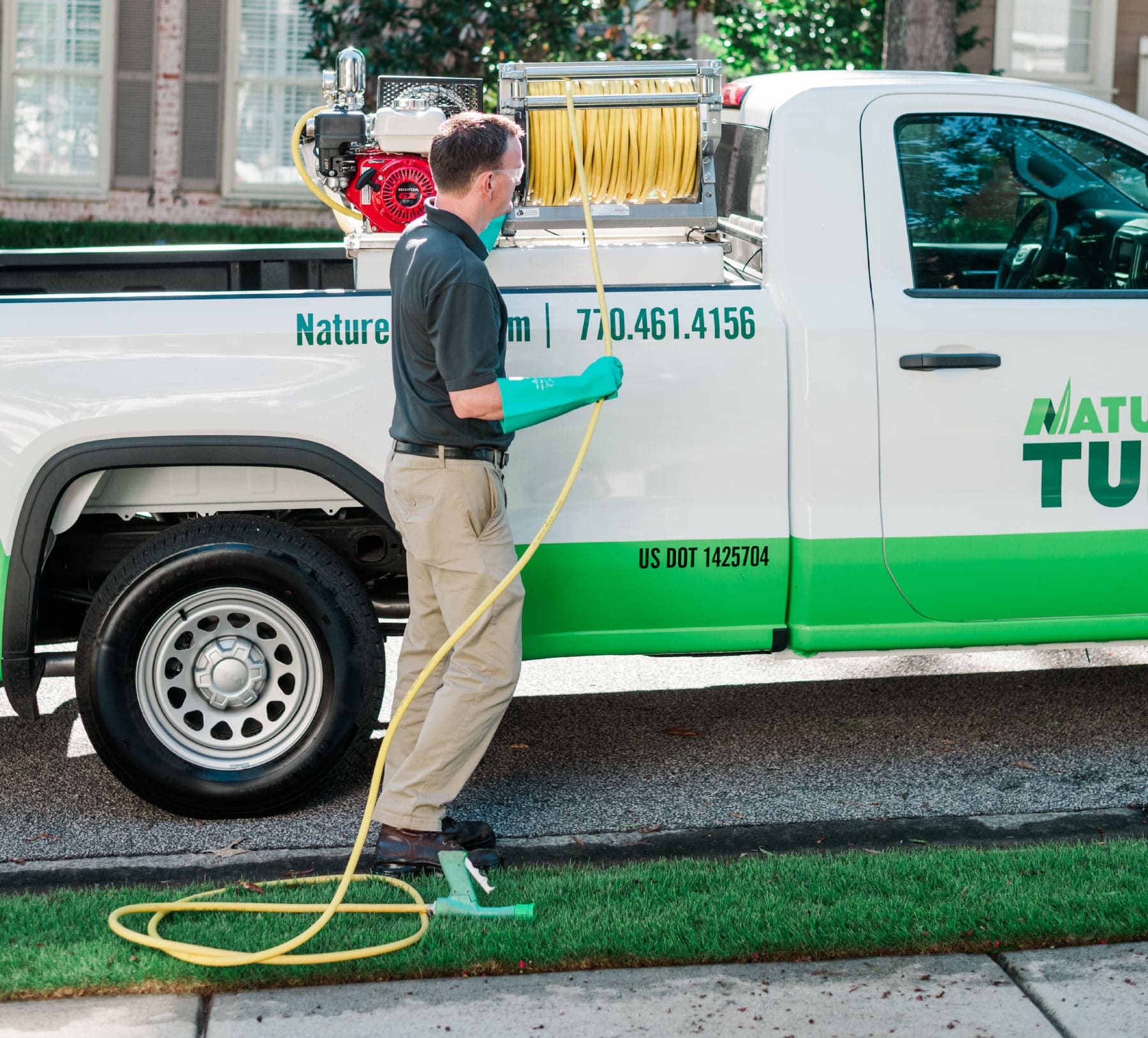Fall Armyworm populations exploded in monumental fashion last year (the summer of 2021). Despite their name, Fall Armyworms often arrive sometime during mid-to-late summer and hang around until the first frost puts an end to their voracious appetites. If you had them last year, here are a few reminders of how to identify Fall Armyworms and when to treat them if they strike again.
1. How to Identify Adult Moths and Egg Clusters
Fall Armyworms aren’t worms at all. They are actually the caterpillars of relatively mundane gray moths. It’s these moths that ride wind currents to Atlanta from south Florida and Texas, where winter is warm enough for Armyworms to survive. Once they arrive, the female moths may be seen around light sources at night, seeking structures to lay their eggs on. Trees, sheds, porches, and even your home are sufficient.
By description, the female moths lay their eggs in masses of white/off-white clusters that adhere to a structure and each other. External scales may make them appear fuzzy. There may be hundreds of them in a single cluster. If they have a dark coloration, the eggs have either hatched or are no longer viable.
2. How to Identify Armyworm Damage to Your Lawn

In last year’s article on Armyworms, we drew a comparison between Fall Armyworms and Eric Carle’s “The Very Hungry Caterpillar.” The story is the perfect description of a caterpillar’s life cycle and illustrates an escalation in consumption as they get older and larger.
When they hatch, the new caterpillars make their way into the turf. Small Armyworms don’t cause the legendary Armyworm damage. As they mature however, they become ravenous, producing exceptional damage in a very short period of time.
The defoliation they create is a bit of a signature, and the resulting damage is rapid lawn discoloration that seems to radiate from a point. Radiating away from a structure or woodline, they march outward, consuming the leaf tissue of the turf they encounter. This is distinguishable from other environmental stresses because of the rate, pattern, and epicenter associated with them. During the early morning or late evening, the worms should be visible at the point where green grass ends and tan grass begins. While Armyworms may vary in coloration, they always have an inverted “Y” on their heads.
3. One Sign of Armyworms: More Birds or Foraging Animals
There could be a small window before visible damage occurs where you may notice more birds or other foraging animals in your lawn. Birds love a good caterpillar snack, and where there are large populations of caterpillars, you may also find birds attending the equivalent of an all-you-can-eat buffet.
The time to treat is when you identify the Armyworms they’re feeding on, hopefully before damage convenes. There are often an exceptional number of Armyworms out of reach of the birds. Rest assured that the insect control products we use to control Armyworms are safe in the event a bird ingests a treated Armyworm.
Will Armyworms Be Bad Again This Year?
Truthfully, it’s hard to know. 2021 was unprecedented, but what does that mean for this year? Since their populations restart every year in our area, last year’s numbers can’t indicate this year’s threat. Memories of last year can have us ready for their arrival, though. At Nature’s Turf, we have the capability to respond to adversities like these in a timely manner. If you have questions, concerns, or Armyworms, give us a call.








